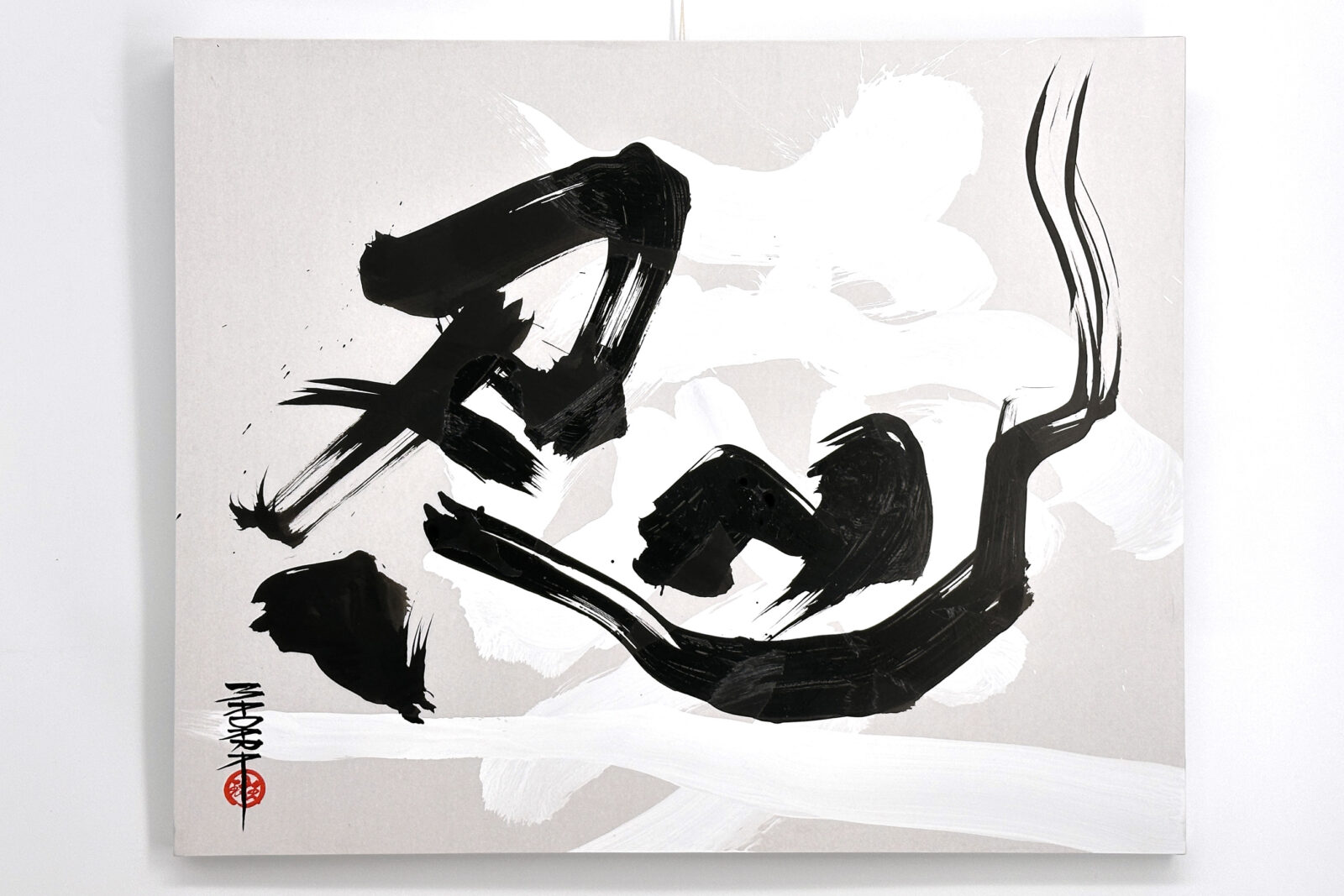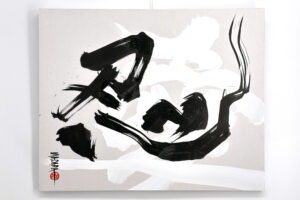Image of the work
You can enlarge the photo by tapping on it.
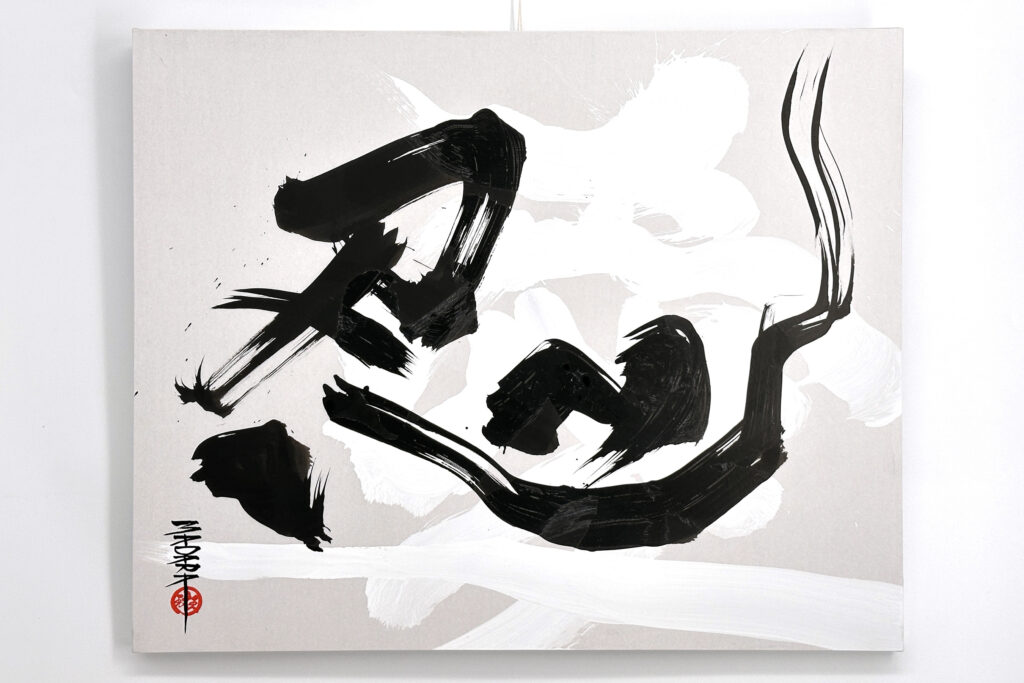
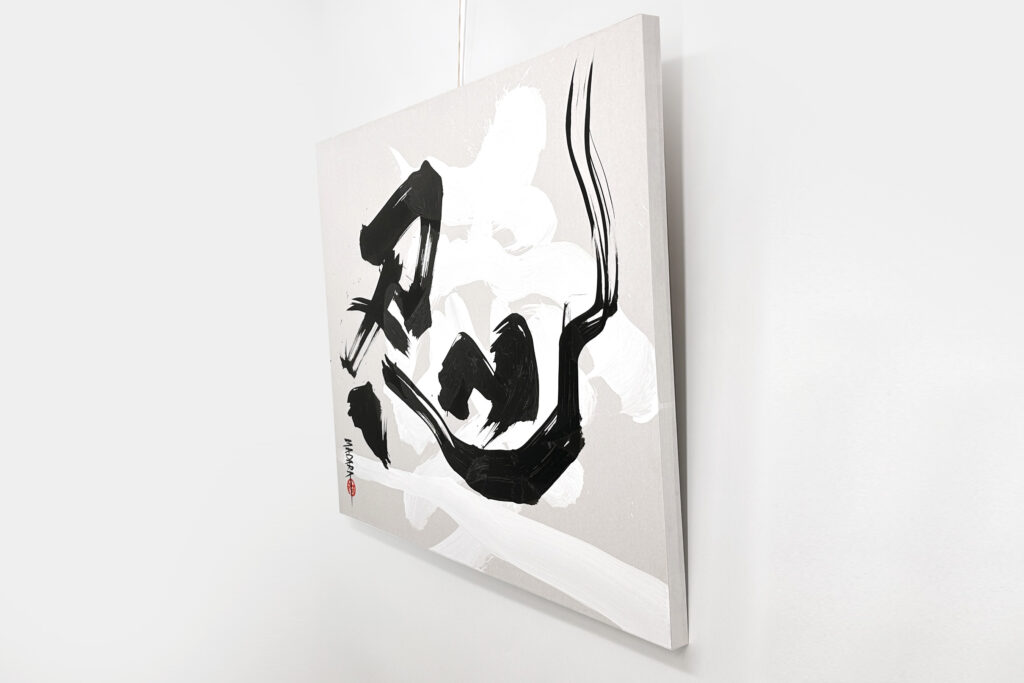
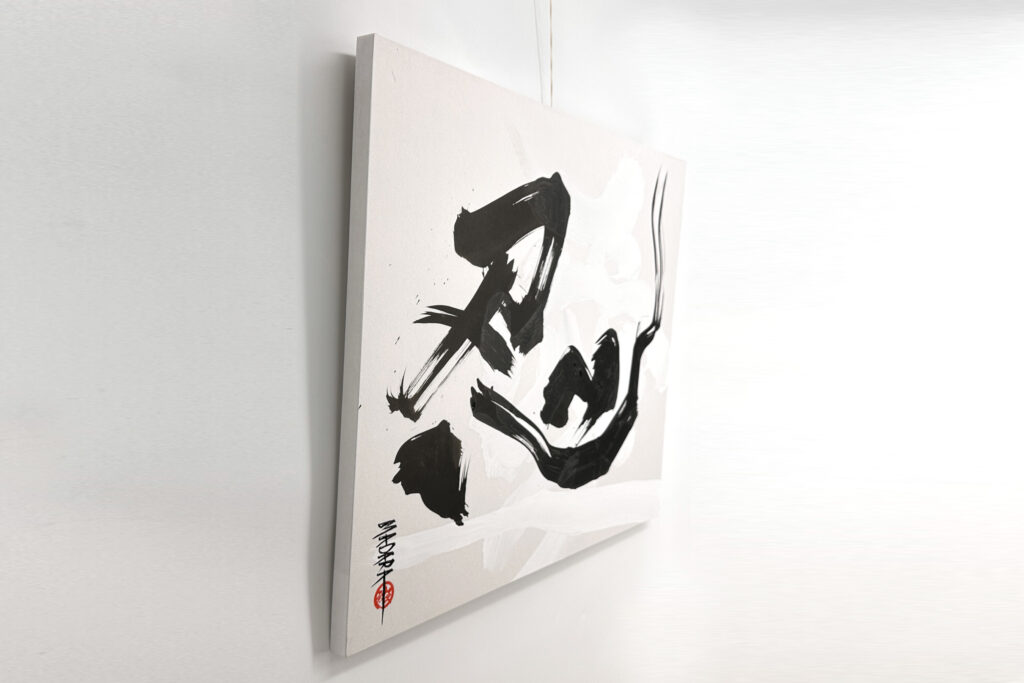
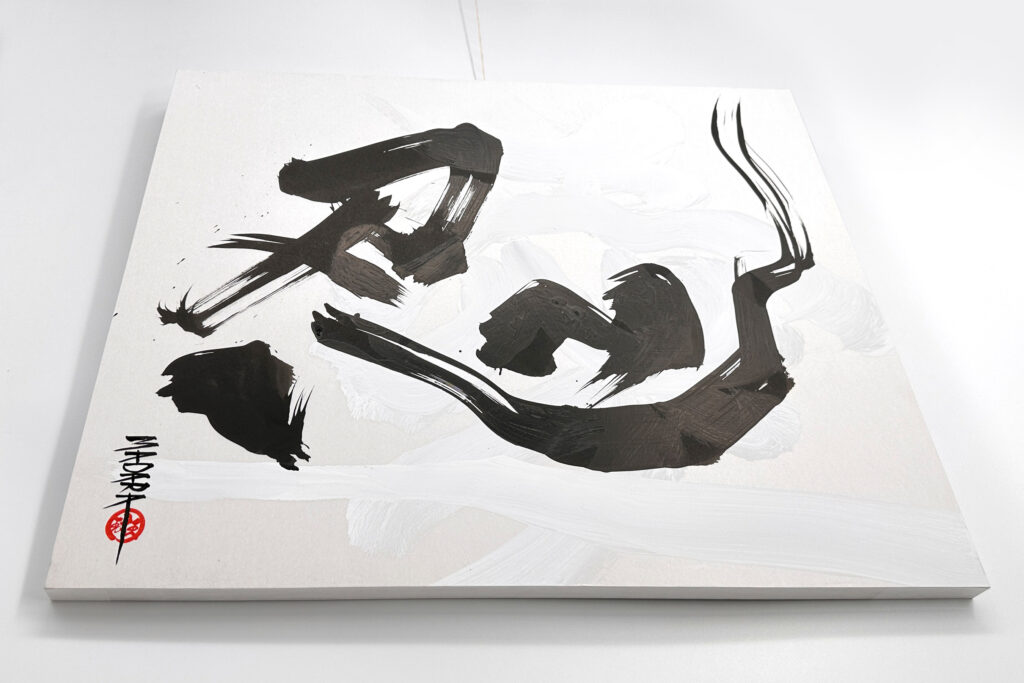
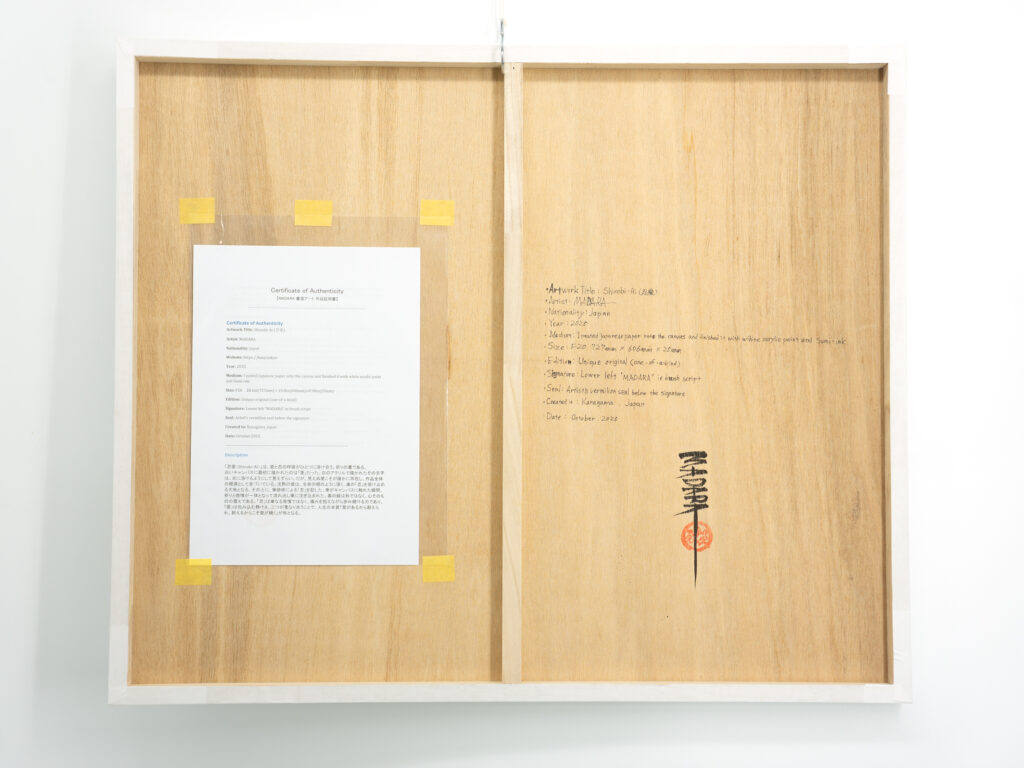
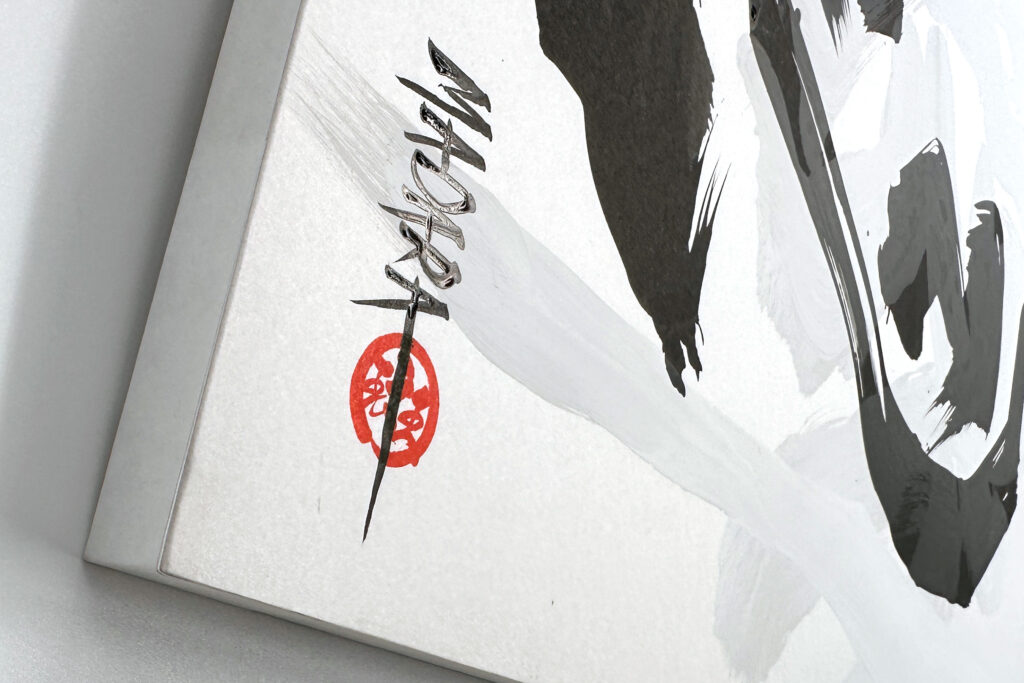

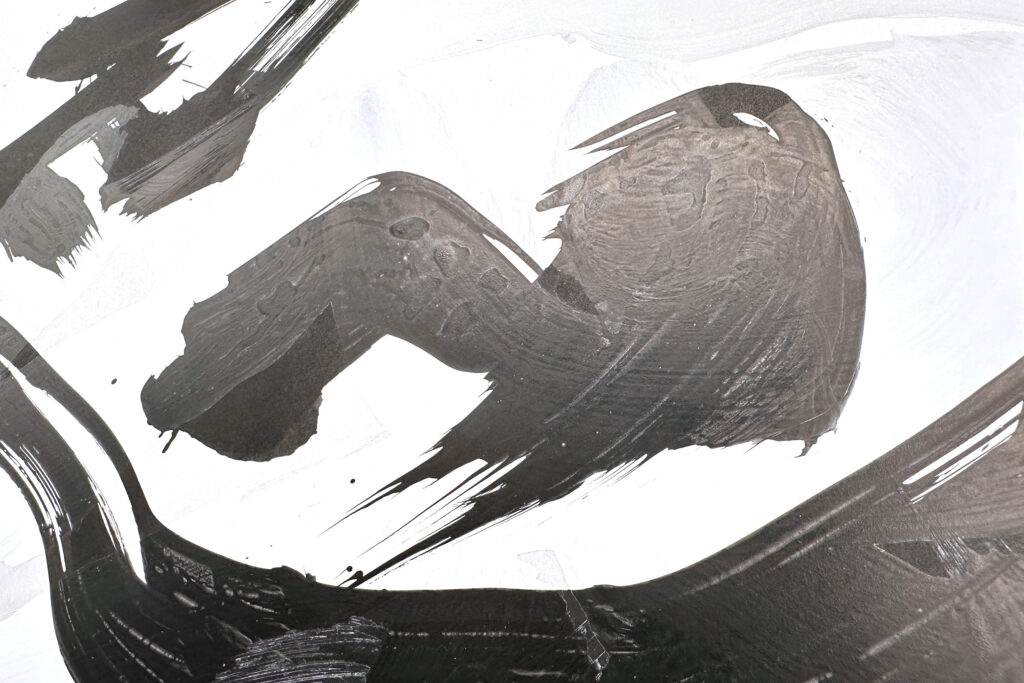
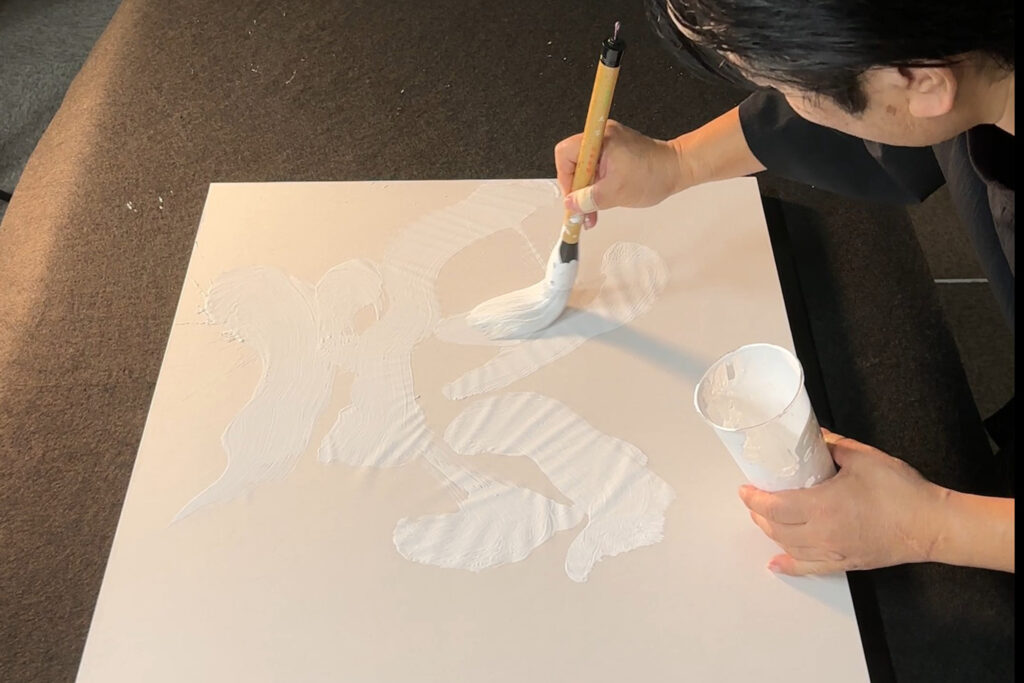
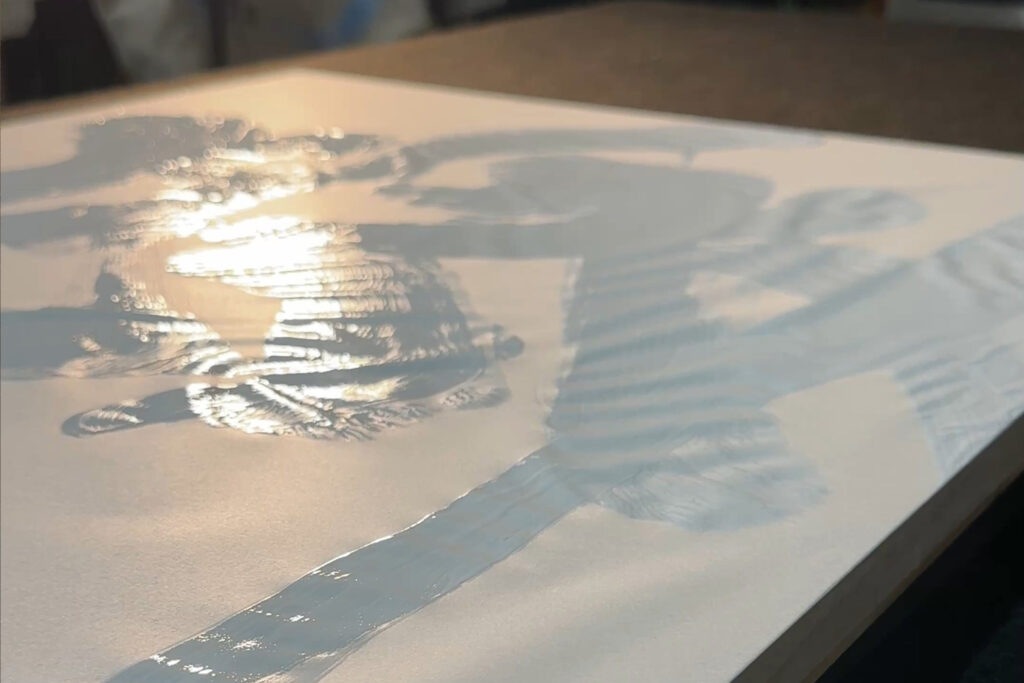
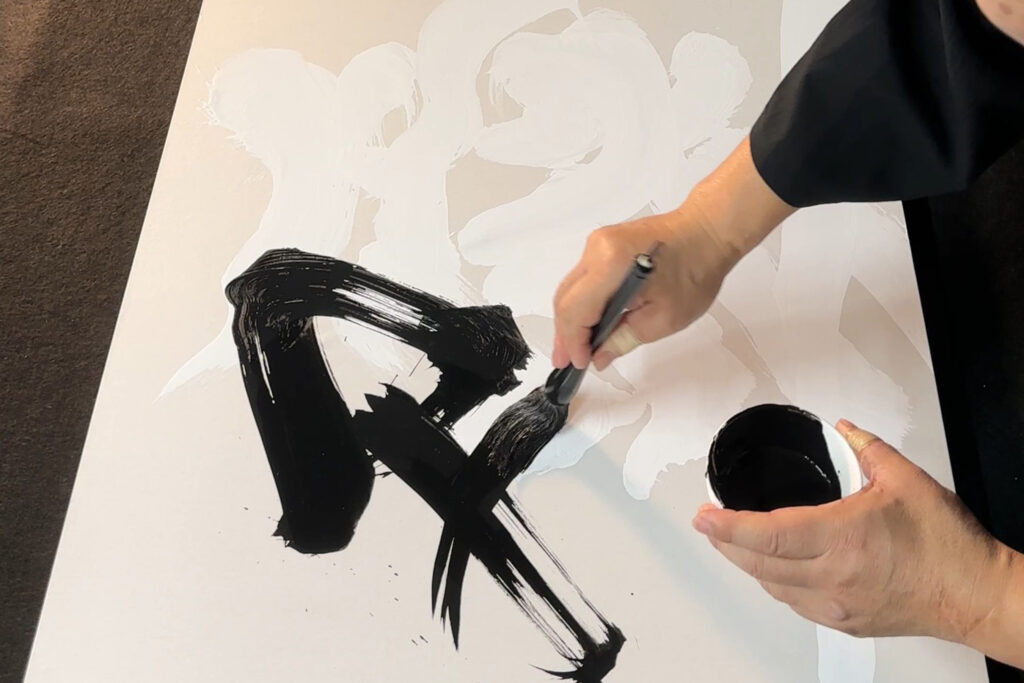
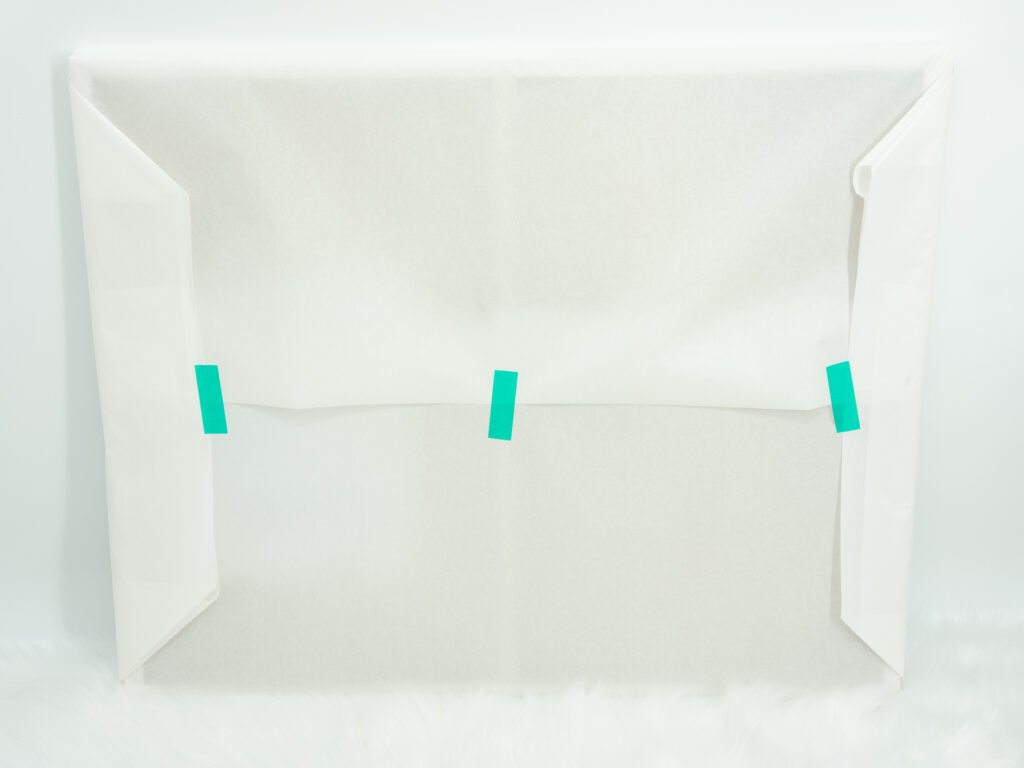
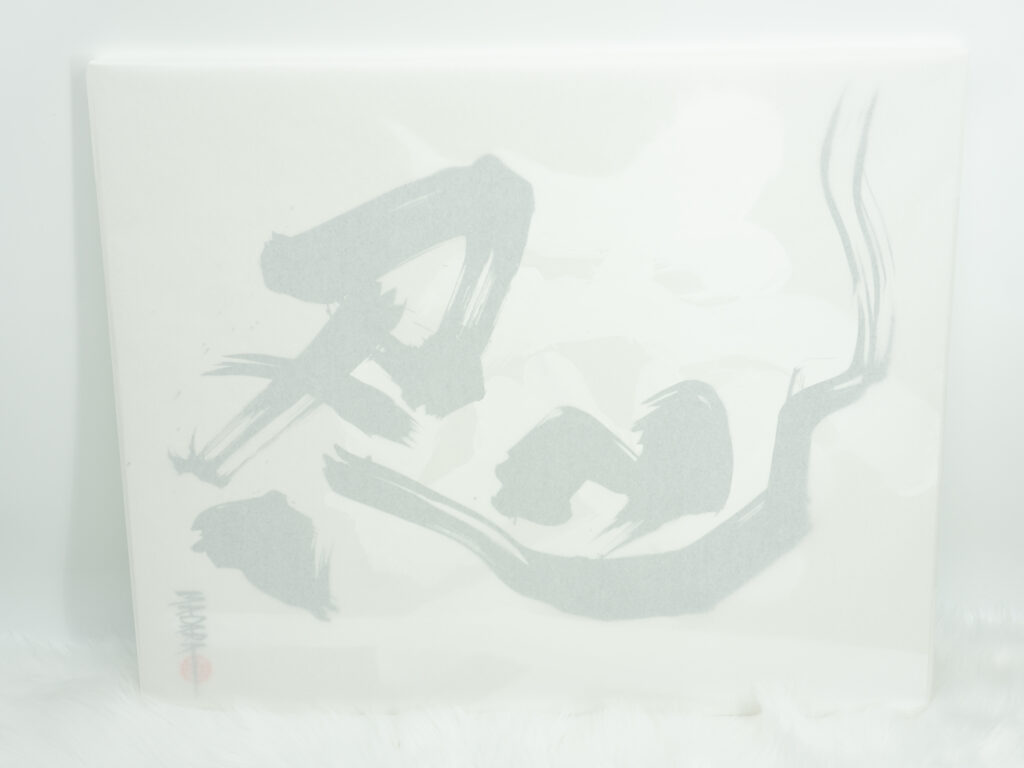
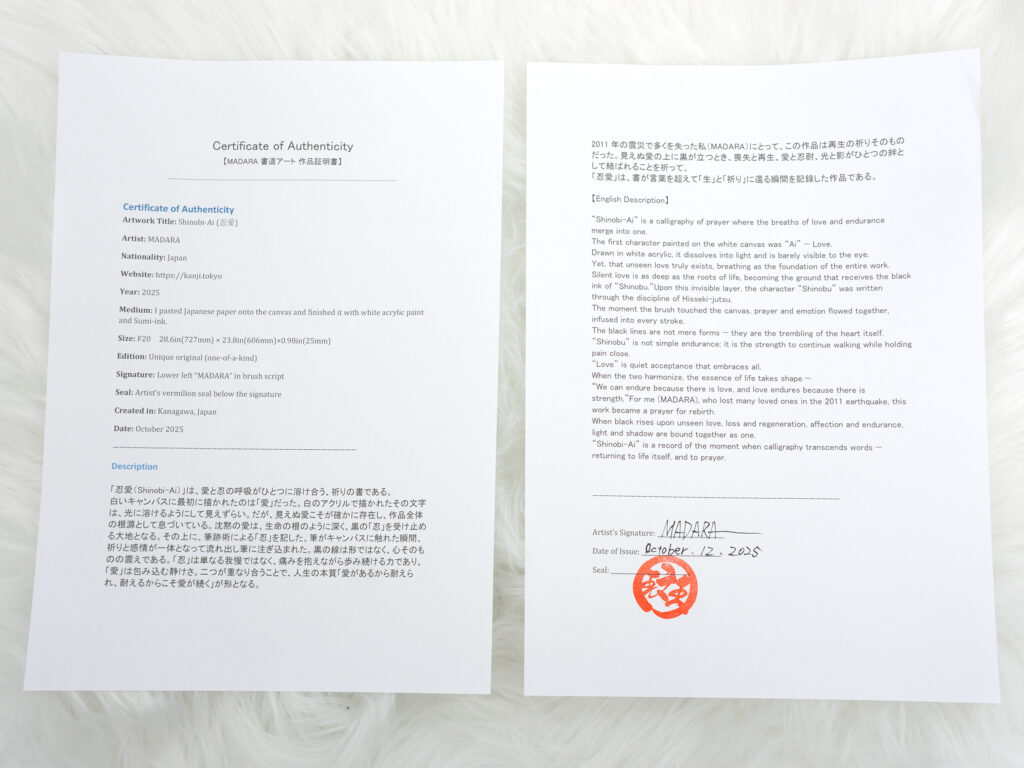
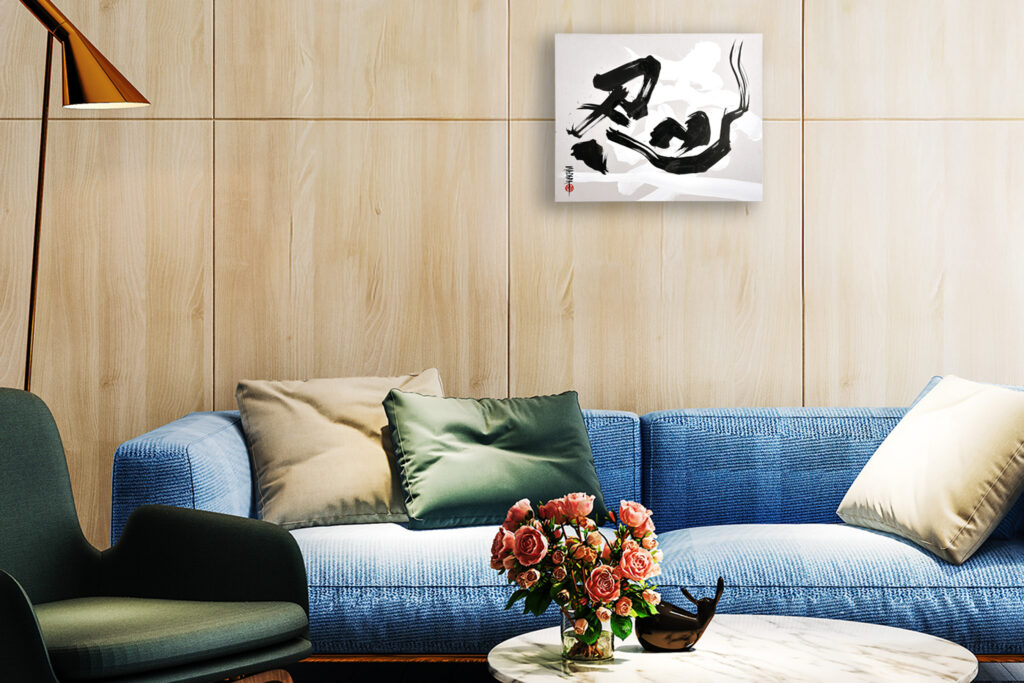

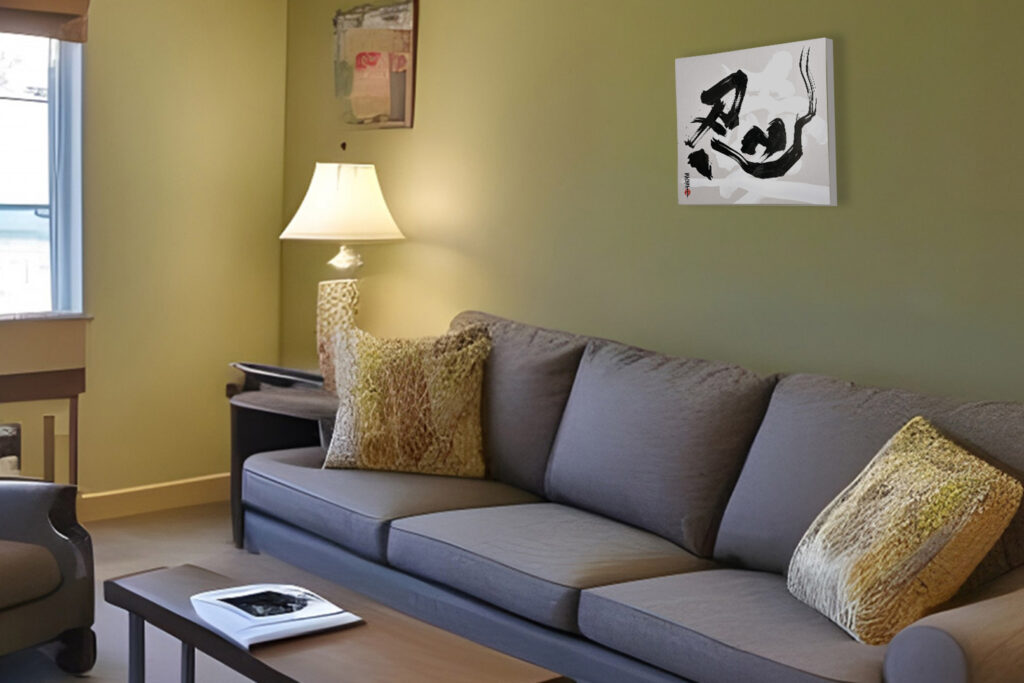
The worldview of the work
Title: 忍愛 – Shinobi Ai –
Artist: MADARA
“Shinobiai” is a calligraphy of prayer, where love and endurance coexist in a single breath.
On a white canvas, the first character painted was “Ai” — love. It was drawn with white acrylic, dissolving into the light, almost invisible to the eye. Yet, the unseen love exists undeniably, breathing as the foundation of the entire work. Love does not speak; it simply embraces. Its silence is deep, like the roots of life, becoming the ground that receives the black ink of “Shinobu.”
Upon this layer of white, the character “Shinobu” is written in black ink.
Through the one-take discipline of Hisseki-jutsu, every intention and prayer flows into the moment when the brush touches the surface. Each stroke trembles, wavers, and breathes. The black line is not merely a form — it is the vibration of the heart itself.
The structure of endurance written upon love reflects the essence of human existence: “One can endure because there is love,” and “Love endures because there is strength.” Within the crossing of white and black, the eternal circulation of love and endurance comes to life.
The word “Shinobiai” signifies the unification of two seemingly opposing emotions.
Love expands outward; endurance turns inward.
Love is the power to give, while endurance is the strength to receive.
When the two become one, humanity discovers the true beauty of living.
This work carries that quiet rhythm of the heart.
The love drawn in white acrylic is almost imperceptible, yet under certain angles of light, it faintly reveals itself — like the gentle presence of someone’s unspoken affection or a trace of prayer in the air.
It is precisely because it cannot be seen that its presence feels so profound and true.
Meanwhile, the black ink of “Shinobu” stands upon that invisible love — powerful yet calm.
In the depth of the ink, in the breath of pressure and release, resides the heartbeat of MADARA’s spirit through Hisseki-jutsu.
At that instant when the brush moves, the writing ceases to be language and becomes life itself.
“Shinobu” is not mere endurance; it is acceptance.
“Love” is not desire; it is embrace.
By depicting these two states together, “Shinobiai” manifests the sacred space that exists between love and endurance.
White and black, like yin and yang, oppose one another yet are mutually dependent.
Without white, black cannot stand; without black, white loses meaning.
This duality mirrors the nature of human emotion.
Within love lies pain; within endurance lies warmth.
In this piece, both coexist in delicate balance.
Love overflows, and endurance sustains it.
It is the quiet struggle every living soul experiences — a struggle that ultimately transforms into prayer.
The layering of white and black upon the canvas resembles a crossroad between invisible light and visible shadow.
Within that boundary lies the essence of MADARA’s calligraphy — and the profound meaning carried through Hisseki-jutsu.
When MADARA takes up the brush, there is no hesitation.
Each stroke holds the entirety of life and intent.
It is both prayer and challenge, movement and stillness.
The flow of the brush becomes pure breath itself, where love and endurance intertwine, resonate, and finally return to silence.
“Shinobiai” is both a work about love and a work about endurance.
It is neither one nor the other alone that defines existence, but their union.
Without love, endurance becomes solitude.
Without endurance, love loses form and disperses.
When they merge, human prayer is born.
Standing before this work, what arises in the viewer is not language but sensation — a light dwelling in silence, or a tenderness dissolving into shadow.
Its impression shifts with the angle, the light, the distance — as though the visibility of love itself mirrors the state of one’s own heart.
“Shinobiai” marks a new horizon in MADARA’s practice of Hisseki-jutsu.
Between the characters of love and endurance, a breath of prayer emerges —
a union of unseen light and visible shadow,
a manifestation of the soul speaking through the brush,
and a living form of love itself.
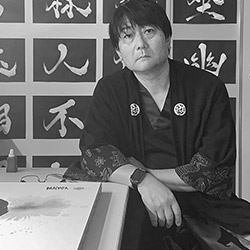
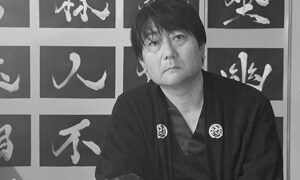
Behind the Scenes
“Shinobiai” – The Story Behind the Creation
I have held the brush many times in my life — and just as many times, I have set it down.
For me, calligraphy has always been the same as living itself: sometimes filled with light, and sometimes marked by pain.
When I decided to create “Shinobiai,” it was not out of ambition or artistic impulse, but out of prayer — a quiet wish to give form to something sacred within me once more.
When I stood before the white canvas, there was no hesitation.
I knew the first thing I must paint was “Love.”
But I wanted that love to be invisible — silent, tender, and yet undeniable.
With white acrylic, I painted the character for love onto the white surface, letting it flow beyond the borders of the canvas.
It became a gesture of remembrance and gratitude — for all that I had lost, and for all those who had sustained me through the shadows.
During the great earthquake and tsunami in 2011, I lost many of my loved ones.
Since then, the word “love” has carried a weight too deep for speech.
And yet, it was love itself that allowed me to survive the darkness.
Though unseen, it was always there.
That is why the white “Love” in this work is more than paint — it is a silent prayer.
When the white layer was complete, I paused.
In that stillness, a single word rose from my heart — “Shinobu,” to endure.
To endure is not merely to bear pain.
It is to keep walking while holding sorrow close.
It is not to suppress anger or grief, but to accept them, to transform them into one’s own strength.
In that sense, “Shinobu” has always been my way of living.
I ground the ink, lifted my brush, and began to write over the invisible love.
The sound of the brush touching the surface echoed like a heartbeat.
Through Hisseki-jutsu — the one-stroke discipline of the soul — there is no correction, no return.
Each tremor of the brush is a reflection of the inner spirit.
At that moment, I poured into the ink everything I had lived through — the disaster, the loss, the rebirth, and the love that had sustained me.
All of it flowed into the single character of “Shinobu.”
The name “Shinobiai” came to me after the work was finished.
Love stands beneath endurance; endurance breathes within love.
Together they uphold one another.
This balance reflects the shape of my own life.
One cannot live by love alone.
Without endurance, love fades away.
But when the two become one, a person can forgive — and begin to love again.
As I wrote, I began to sense the voices of those I had lost, whispering softly through the rhythm of the brush.
Their presence was not sorrowful; it was calm and accepting.
The black ink did not cover the white — it lived within it.
Love and endurance dissolved into one another, erasing the boundaries between them.
It felt as though past and present were merging, giving birth to something new.
When I placed the brush down, my hands trembled.
But it was not from sadness — it was peace.
At last, “writing” had become “praying” again.
“Shinobiai” holds a sacred place in my journey.
It is neither purely a work of love, nor solely a work of endurance.
It is the meeting point between the visible and the unseen — between the strength to live and the tenderness to forgive.
It is there, in that fragile crossing, that the meaning of life begins to shimmer.
Today, this work travels beyond Japan.
My wish is for the prayer within these strokes to reach others — beyond language, beyond culture, beyond distance.
Love and endurance are not only virtues of Japan; they are human truths that belong to all of us.
Hisseki-jutsu is a way of guiding the future — of channeling the life force through written form.
To write is to draw destiny.
And for me, “Shinobiai” was an act of rewriting my own.
When the ink dried, I realized I could finally love the future as much as I had endured the past.
This piece became my rebirth — a calligraphy of gratitude for a life sustained by love.
Kanji meaning
The Meaning of “忍” (Shinobu)
The character “忍” is composed of two elements: the blade “刃” above, and the heart “心” below.
Together, they symbolize “a blade held within the heart.”
It represents the quiet strength of those who carry pain, yet continue to move forward.
In Japanese culture, “Shinobu” means much more than to endure.
It is the act of embracing hardship without losing tenderness — to accept suffering, transform it, and keep walking with dignity.
True endurance is not rigidity; it is softness that holds its form through compassion.
This philosophy echoes the Zen idea that “gentleness overcomes strength.”
In calligraphy, “忍” embodies inner power.
Its energy resides in the balance between stillness and motion —
the tension of the brush at the moment of pause, and the breath released in the final stroke.
To write “Shinobu” is to inscribe one’s spirit upon the paper,
revealing not the appearance of strength, but the quiet pulse of resilience that lies beneath.
“忍” is the heart that endures — not by resistance, but by acceptance.
It is the calm flame that continues to burn, even within the storm.
The Meaning of “愛” (Ai)
The character “愛” has ancient roots.
Its early forms depict the heart, the hands, and the act of walking toward another —
a movement of connection, a gesture of offering one’s heart.
“Love,” in this sense, is not static emotion, but “a heart in motion.”
In Japanese philosophy, “愛” signifies more than affection or desire.
It is compassion, empathy, and the act of embracing life itself.
It is the quiet strength of caring for others without expectation,
and the warmth that allows souls to meet without words.
In the art of calligraphy, “愛” expresses vitality through rhythm and flow.
Its character transforms depending on how it is written:
when drawn with strength, it conveys passion; when written softly, it becomes tenderness.
MADARA’s white “愛,” painted in white acrylic on a white canvas, is an invisible love —
the silent foundation of existence, seen only when light reveals it.
It is the essence of unconditional love — a presence that needs no proof.
“忍” and “愛” — The Two Breaths
“Shinobu” is the blade that guards the heart.
“Ai” is the light that opens it.
At first glance, they seem to oppose one another,
yet together they complete the cycle of human existence.
Endurance sustains love.
Love redeems endurance.
In their union, we discover a deeper beauty —
the harmony between stillness and emotion, between shadow and light.
“Shinobiai” is the fusion of these two breaths.
It is the point where pain becomes compassion,
and where love finds its strength in silence.
Work details
| table of contents | specification |
|---|---|
| The basis of the work | Wood Campus |
| Material | wood, Japanese paper |
| Size | F20 28.6in(727mm) × 23.8in(606mm)×0.98in(25mm) |
| Materials used | India ink, acrylic paint |
| Finishing the work | Japanese paper (calligraphy paper) is pasted on a wooden canvas and finished with a mixture of white acrylic paint and India ink. |
| Regarding domestic and international shipping | ・International shipping available: Ships via FedEx if no designated shipping company is specified. ・Domestic shipping in Japan: Ships via Yamato Transport if no designated shipping company is specified. |
| Packaging at time of shipment | We can also accommodate requests for packaging such as simple packaging and heavy-duty packaging, so please contact us for details. |
| Shipping | Decisions will be made in consultation with the buyer regarding whether to use transportation suitable for art works, whether to take out insurance, etc. |
| Compensation for works | The artwork will be delivered in the same condition as when it was sold. If you would like to purchase art insurance, we are happy to discuss this. |
| Payment Method | The payment amount is the artwork price plus shipping. Payment can be made by credit card. |
Artwork Storage and Care
Each artwork is individually wrapped in traditional Japanese washi paper
and stored in a climate-controlled room where temperature and humidity are carefully maintained.
This ensures that every piece remains in its best condition,
protected from light, moisture, and dust until it is delivered to the collector.
All artworks are shipped with professional protective packaging,
ensuring safe and secure delivery both within Japan and overseas.
A certificate of authenticity will also be included.


